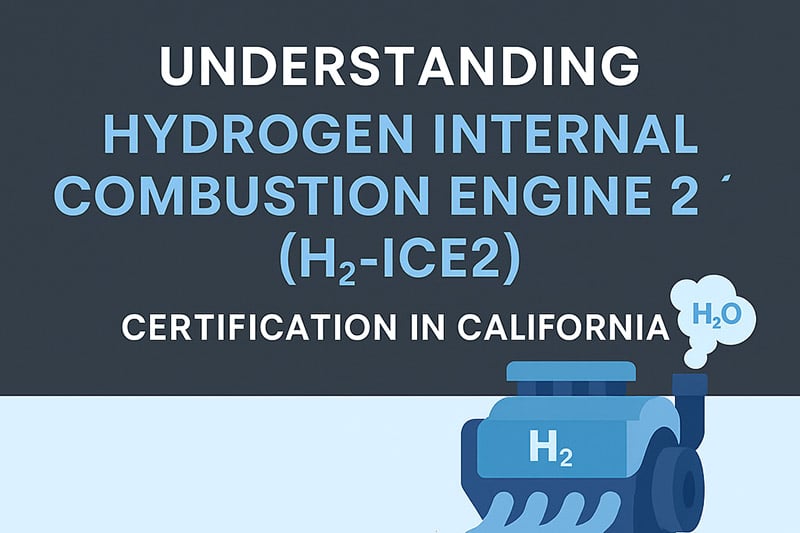
Understanding Hydrogen Internal Combustion Engine 2 (H2-ICE2) Certification in California
As California leads the push toward zero-emission transportation, the state is now paving the way for Hydrogen Internal Combustion Engine 2 (H2-ICE2) certification. This emerging standard represents a major step forward for hydrogen-fueled vehicles that use internal combustion technology instead of fuel cells, offering a practical, scalable path to decarbonizing heavy-duty transportation.
What Is H2-ICE2?
Hydrogen Internal Combustion Engine 2 (H2-ICE2) refers to the latest generation of internal combustion engines powered entirely by hydrogen. Unlike traditional gasoline or diesel engines, H2-ICE2 engines produce near-zero CO₂ emissions. They operate using hydrogen gas as the primary fuel source, combusted in a similar way to conventional fuels but with water vapor as the primary emission.
This makes them an attractive option for industries that rely on high-performance engines but face growing regulatory pressure to reduce greenhouse gas emissions—such as freight, construction, and agriculture.
California’s Certification Process
To be sold or operated in California, engines must meet the strict standards set by the California Air Resources Board (CARB). The H2-ICE2 certification aligns with CARB’s focus on reducing emissions without sacrificing reliability or power.
To get certified, manufacturers must submit detailed emissions data, including NOₓ, particulate matter, and greenhouse gas output. They must also demonstrate that the engine can meet California’s durability and performance standards over the vehicle’s operational life. Testing protocols may mirror those used for zero-emission and low-NOx engine certifications, but are adapted for hydrogen combustion.
Why H2-ICE2 Matters
The H2-ICE2 certification is a big deal for hydrogen innovation. While fuel cell vehicles have grabbed headlines, internal combustion technology offers a lower-cost, transitional solution that uses existing engine manufacturing infrastructure. Fleets can leverage familiar maintenance practices, engine designs, and refueling logistics—making adoption faster and more practical.
Moreover, California’s push for H2-ICE2 certification sets a precedent that could influence federal EPA standards and other states adopting CARB rules. It sends a signal that hydrogen combustion is a viable part of the clean transportation future.
Final Thoughts
As California moves forward with H2-ICE2 certification, fleet operators and engine manufacturers should watch as closely as they can. We here at ECO have been monitoring the ever changing landscape and requirements. With the potential to combine the strengths of traditional engines with the benefits of zero-carbon fuel, H2-ICE2 could be a game-changer for sectors not easily electrified.
Call us if you have any questions and protect your company and product.